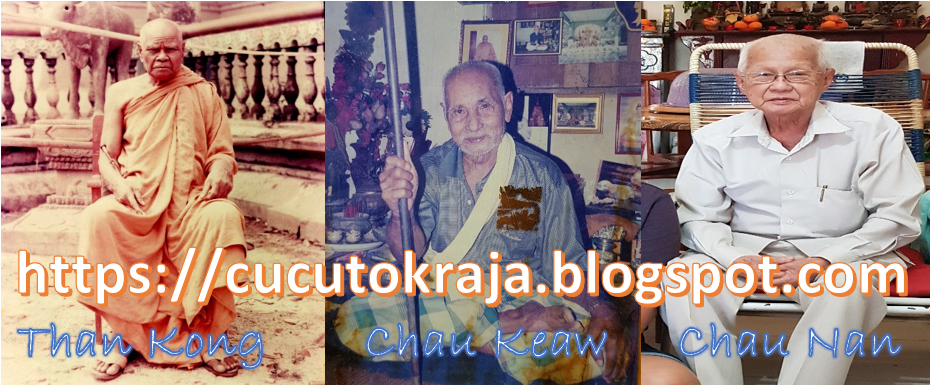Kru Bar Keow Kummasutho, a merciful 88 year old monk ( deceased )of Phayao province who studied Vipassana Meditation as a disciple of Kruba Sriwichai who was known to have a profound knowledge of Visha and is highly revered in Thailand. Vipassan means "to see things as the really are" – an ancient meditation technique discovered by Gotama the Buddha more than 2500 years ago.
Kruba Keow is also highly respected for his dedication and practice of the 700 year old traditional use of holistic folk medicine
Many people have reported miracles associated with the amulets consecrated by this Guru Monk.
Every day, many people go to meet Kruba Keaw as they firmly believe that he has power to secure good fortune, particularly in business and love.
Kruba Keaw is known as a Lanna monk, differing from other Thai monks in as much that he practises the centuries old traditional form of Buddhism and meditation derived from the original Lanna scripts
Note:
The Tipitaka was first written in Sri Lanka, on palm leaves in the Singhalese script, in the year 433 of the Buddhist Era. ....In Thailand, the scriptures were first inscribed in the Great Buddhist Council at Chet Yod Monastery in Chiang Mai in 2020 of the Buddhist Era (A.D. 1477). The script used then was the "Lanna script.
To the many monks in Northern Thailand, such as Kruba Keaw, practicing the original Lanna ways of chanting, blessing or meditation can be very difficult and generally will require a life time process of learning and dedication. One of the very reasons he is so highly regarded by the people of Northern Thailand. These amulets were made to raise funds for temple
restoration.
A unique Khun Paen amulet consecrated at Wat Rongdoo by Kruba Keaw Kummasutho.
The amulet is made from a variety of sacred constituents but in particular from holy earth collected from a number of auspicious sites and temples throughout the kingdom of Thailand.
The amulet was then immersed in Thai flower oil, which has a wonderful aroma, and associated with love, opposite sex attraction and good relationships.
Its fragrance is said to give a sense harmony and security and allows us to overcome our own selfishness and self centeredness. It is said that these flowers have an affinity with the heart chakra that it livens, allowing it to irradiate the energy of love in our thoughts and our actions.
The amulet face features an image of khun Paen who is obviously known to us from ancient Thai literature (King Rama ll) as a 'Dashing Lover' and 'Able Warrior'
This amulet is ideal for the man that wants to increase his natural attractiveness to the opposite sex, someone that wants to be charming and surrounded by female company.
The reverse of the amulet features two silver takruts, shards of ivory and sacred thread. The sacred threads are infused with magical powers (known as saisin) and typically used in various Buddhist ceremonies. The thread was stretched between monks and a central Buddhist image during the chanting and consecration ritual for these amulets.
Essentially it is used as a conduit to carry and enhance the prayers vibrations and power. At the end of the ceremony the thread is often cut into small segments to be tied around the wrists of the devotees and lay participants for good luck and prosperity.
The shards of ivory are also highly significant.
In Buddhism the elephant remains symbolic as the vehicle for divine teachings, a symbol of divine truth. The shards are a representation of morals and dignity and are associated with luck. The elephant's characteristic of being sacred originate from the time that it would bring flowers and carry the gem of wishes to Lord Buddha.
Whereas the takruts provide protection against accidents and evil. All of these auspicious materials have been used specifically for multiple blessings for the wearer.
• Help in creating business opportunities and drawing wealth
• Dissolving disharmony and discord between people
• Opposite Sex Attraction
• Conquering and eliminating enemies
• Protection of body and property.
• Averting obstacles and danger




No comments:
Post a Comment